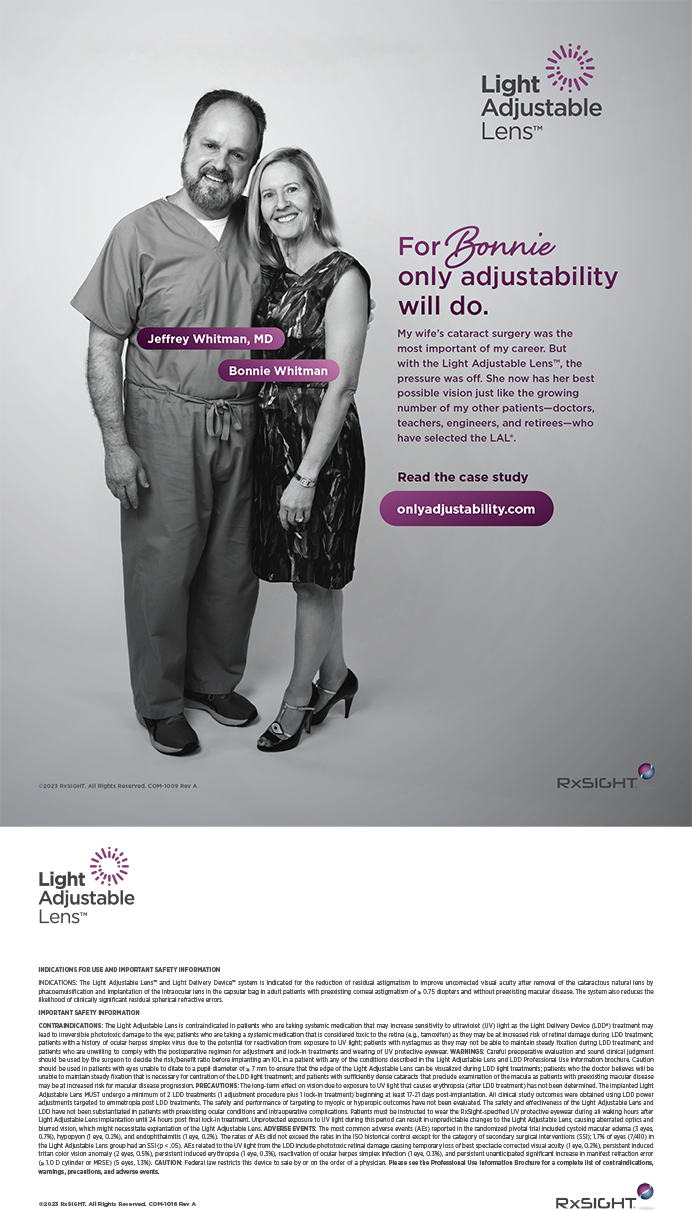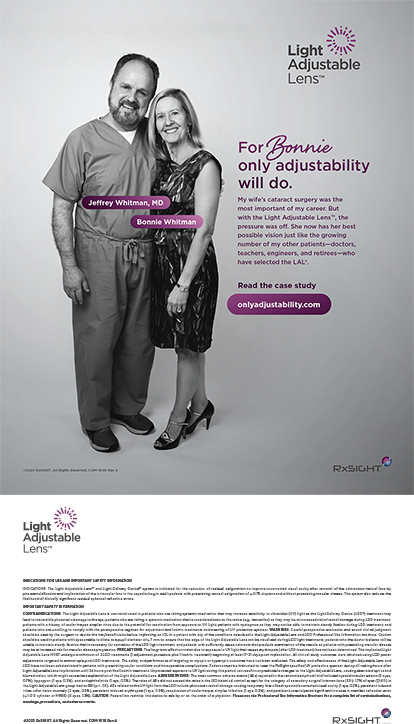
Just when you thought it was safe to settle into your routine of making recommendations for refractive cataract surgery patients, the landscape is changing again.
Over the past year or so, I’ve honed, crafted, and customized conversations with my patients as I have gained experience with various presbyopia-correcting solutions, such as the Tecnis Symfony extended depth of focus IOL (Johnson & Johnson Vision), the two near vision powers of the Tecnis Multifocal IOL (Johnson & Johnson Vision), the Crystalens AO (Bausch + Lomb), and the two commonly used AcrySof IQ ReStor presbyopia-correcting IOLs (Alcon).
However, as I begin to integrate the Light Adjustable Lens (RxLAL, RxSight) and the AcrySof IQ PanOptix trifocal IOL (Alcon) into my practice, I am once again faced with the ever-changing, dynamic world we live in as refractive surgeons. Not only do I have to acquire initial experience with these lenses and understand where they fit into the mix of available presbyopia-correcting options, I also need to educate my staff, change my paperwork and processes throughout the office, make sure biometry and intraoperative aberrometry are updated appropriately, and begin to methodically track outcomes to ensure that we are on target.
I am reminded of how differently products perform in the real world compared with how they performed in FDA studies. One of my first real-world encounters with this phenomenon was when the Crystalens was approved by the FDA and first introduced to the US market. The data from the FDA study were amazing, demonstrating outstanding distance, intermediate, and even near vision with the lens. Eyeonics, the company that developed and owned the product at the time, came out of the gate telling surgeons that their patients would no longer need spectacles and would have perfect near, intermediate, and distance vision.
When I started implanting the lens, I naively set high expectations for my clear lensectomy patients. I found that the lens indeed provided improved vision over a standard monofocal lens, especially in the middle range, and offered high quality of vision and contrast at night. However, the near vision was certainly not as promised. I learned to change my conversation with patients to set their expectations appropriately. That took time, energy, and education of staff and patients, as well as quite a bit of experience using the product.
Today, with two new heavy-hitter implants entering the premium IOL market in the United States, I am again faced with the enjoyable challenge and the creative aspect of figuring out how to integrate them into my routine. These two technologies are very different from each other. The RxLAL holds the potential to provide sharper vision than ever, with almost complete elimination of refractive error and a true target of emmetropia. Additionally, my tried-and-true methodology of using monovision extensively in many patients becomes even more viable and realistic, with the potential that fewer patients will experience postoperative issues.
On the other hand, the PanOptix lens, with its trifocal optic, is the first IOL in the US market to truly address all three ranges of vision.
Despite my experiences with some previous technologies, I am still cautiously optimistic about these two new ones. I will methodically, conservatively, and slowly integrate these technologies into my practice until I understand the pros and cons of each of them and how best to use them successfully.
Patient selection must be done carefully, and patient expectations must be tempered with the reality that it is still quite implausible that we will be able to provide 100% perfect vision in all ranges with these new technologies. Open communication with our peers, collaboration with industry, and phase 4 postmarketing peer-reviewed studies will shed further light on our expanding portfolio and, hopefully, lead us on a path to happier patients with better vision.




